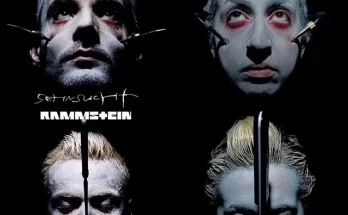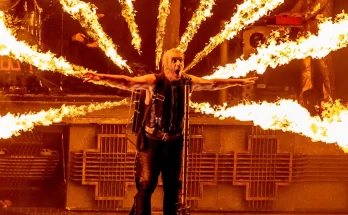Inside the mind of a monster and a poet, the Netflix documentary The Till Lindemann Untold Story (or as some sources frame it, Inside Inferno Heaven) promises to be a visceral excavation of how darkness and creativity can fuse in one complicated human. The film purports not simply to chronicle the career of the controversial Rammstein frontman, but to pry open his internal furnace, exposing the heat and the shadows in equal measure. More than spectacle, it aims for confession; more than biography, it courts myth. And in doing so, it reminds us that forging an artist like Lindemann means burning one too.
From the earliest glimpses, the documentary sets its tone in fire and silence. We see Lindemann reciting fragments of poetry in dim light, juxtaposed with the roar of packed stadiums and the flash of pyrotechnics. The film’s trailer opens on stark black‑and‑white frames: a solitary figure, limbs heavy with age and memory, standing in a void before the machinery of spectacle erupts. “You know the songs. You know the shows. But you don’t know me,” he intones—an invitation that thrills as much as it unnerves.
The documentary traces Lindemann’s journey from his East German childhood, a time when the Iron Curtain still weighed on every poetic impulse, through his early athletic dreams and ill-starred flirtations with poetry, to the clash and crescendo that would become Rammstein. That arc isn’t unique in rock lore, but here it is painted more as a ritual than an origin story: a series of trials, defeats, and combustions that tempered the man into something incandescent.
One of the documentary’s boldest moves is refusing to sanitize the darker chapters. Lindemann is not presented as a flawless genius but as someone who has clashed with his own nature—someone who breathes flames but also bleeds. The film alludes to personal loss, exhaustion, and the physical and emotional weight of mythmaking. In one backstage moment, he bows his head before walking into the glare of a stadium of screaming fans—a brief, brutal reminder that the persona is always opera, and the man always human.
What’s compelling is how the film threads Lindemann’s identity as both poet and monster. His lyrics and poetry are shown not as ornament, but as confession: obsessions with mortality, violence, longing, and transgression. The documentary underscores that his extremes in performance—fire, shock, provocation—do not exist outside his inner life. Rather, they are the eruptions of it. Throughout, the visual language mirrors this dualism: the cold grey of Berlin and concrete contrasts with the molten coppers and reds of stage flames; slow close-ups of handwritten scrawls countercut with sweeping drones over stadiums.
Collaborators, critics, bandmates, and lovers interject their voices, complicating the narrative. Some see Lindemann as an iconoclast, others as a provocateur who courts outrage for its own sake; still others marvel at a humanity behind the myth. There’s no single lens through which the film forces you to view him—only a choir of perspectives that sometimes collide in discomfort. This is not a hagiography. It’s a reckoning
In the trailer, Trent Reznor’s voice echoes: “He created a language—not just in German, but in fire, rhythm, and pain.”That remark underscores the film’s central thesis: Lindemann has not just sung songs; he has wrenched from his own darkness a syntax of transgression. His shock tactics, then, are not mere gimmick—they are gestures, stylized violence that thrusts his private torment toward a public stage, demanding confrontation rather than mere consumption.
We see hints of how this capacity for transmutation was born. His youth as a swimmer in East Germany, his early affinity for poetry, his navigation of a divided Germany—these are shown not as benign backstory but as pressures, constraints, cracks through which fury and longing could flow. The film doesn’t simply narrate how Lindemann became a monster; it suggests how a sensitive, volatile soul had little choice but to transgress in order to be seen.
The visuals promise an immersive cinematic experience: choreographed chaos, slow-motion violence, molten light, and the hush between flames. The concert footage pulsates, massive, overwhelming—but the film also lingers in silence, in the pages of a notebook, in the stillness of a cabin, in a man replaying memory. In that contrast lies the documentary’s ambition: to make us feel Lindemann’s gravity.
Yet, for all its intensity, the film seems to admit that some parts of Lindemann may never be resolved. The man is messy, contradictory, and restless. The documentary does not attempt to smooth those edges. Instead, it lets you sit in the tension: the monster and the poet, the desperate and the divine, the spectacle and the silence. If Lindemann ever dared to ask, “Do you want to burn?” this film seems poised to answer, “Yes—but understand why.”
In the end, The Till Lindemann Untold Story isn’t just about a frontman, or a band, or a life lived in extremes. It’s about the alchemy of suffering and creation. It asks whether genius necessarily burns the vessel that contains it. It dares us to listen to the roar, to feel the heat, and, in the gaps between flames, to glimpse a haunted, incandescent human at the center. When the credits roll, one hopes we step away burning—changed, unsettled, compelled to reckon with our own monsters and poets.



